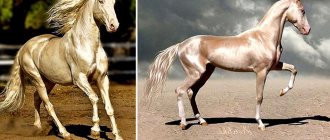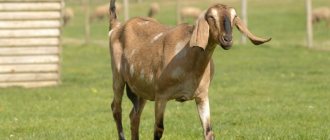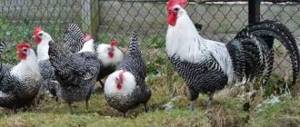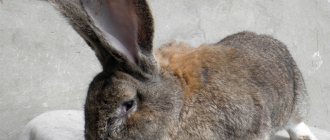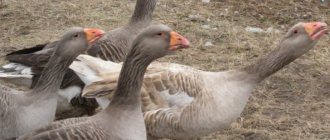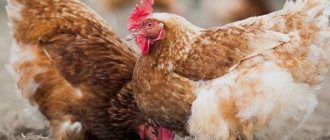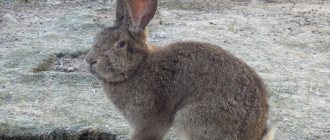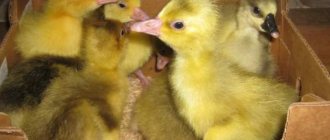Origin story
The initiator of the breeding of horses for the cavalry was S. M. Budyonny. At the end of the civil war, stud farms in the Kuban were given every possible support to create a stock of horses for breeding.
The directors of the stud farms were the commanders of cavalry units who were well aware of the requirements for horses for military needs. 70 stallions of the English riding breed were delivered to 150 mares of the Don breed. A special role in the formation of the characteristics of the Budennovsky breed was played by the stallions Simpatyaga, Kokas, Inferno, as well as Rubilnik.
The following stud farms continue to breed Budennovsk horses:
- named after S. M. Budyonny;
- named after the First Cavalry Army;
- "Yulovsky";
- "Virgin Land";
- "Donskoy"
- in Kalmykia;
- Krasnodar;
- Stavropol region;
- Primorye.
Horses, with general breed qualities, have factory characteristics:
- the horses from the First Cavalry are recognized by their bay color, large head, and angularity;
- stud farm named after Budyonny is recognized by his muscular, broad-bodied, red-golden horses;
- Yulovskie horses are more graceful, golden in color.
The cultural herd breeding method in combination with physical activity made it possible to quickly form breeding characteristics. Official recognition of the breed occurred in 1948. From the Donetsk people, the Budyonnovsky team adopted their style, unpretentiousness and endurance. English horses conveyed the exterior and agility.
In the 60s, the demand for riding and draft horses for army needs fell sharply due to the expansion of the automobile fleet and the abolition of cavalry as a branch of the military. The Budyonnovsky horse has been preserved and is in demand as a sporting horse, for organizing tourism, hunting, horseback riding, and hippotherapy.
A pensioner of the Ministry of Internal Affairs buys Don and Budennovsky horses from slaughterhouses
A resident of the famous “village of adopted children” of Shapa near Smolensk, Viktor Egorenkov raised nine children, and is now trying to save the legendary Don and Budennovsk breeds of horses. Read more in the material of the Federal News Agency.
The Budennovsky breed was developed by crossing Don horses with English ones and was officially approved in 1948. These are tall, strong, war horses, ready to faithfully serve man, either under saddle or in harness.
“Donchak is the only purely Russian, domestic breed,” says Egorenkov proudly. - They are ready for heavy loads and severe frosts. When the temperature drops to minus 40 degrees, not every horse can handle it. And they endure.
There is nothing to say about endurance: the Donchak will put any foreign horse in the belt already in the third kilometer. There will be 40 and 50 kilometers to run. Whether it's for the plow or for the governor - it's a war horse! These are monogamous horses, serious horses.”
from personal archive / Viktor Egorenkov
In recent years, both breeds have been used primarily in racing. But the number of horses is rapidly decreasing; now in Russia, only the stud farm named after the First Cavalry Army and the horse farm, as well as several private farms in the Proletarsky district of the Rostov region, are breeding Budennovsky horses.
“Stud farms are closing,” Victor states the sad fact. - The lands are sold, and the horses are used for meat. It is more profitable for businessmen to sell land than to feed their horses. They send 60-70 heads each to the meat processing plant.
This information quickly spread among the horsemen... This is the case, they say, when young breeding animals are put under the knife. There are very few Donchaks left now: according to some sources, 180, according to others - 200 heads of purebred queens.”
Victor decided that he could not stay away. In addition, there are many children growing up in the village who need something to do. And the man decided: let them take care of the horses, see the animals not in the picture, but in real life.
instagram.com / @Spbzoopark
Egorenkov was prepared for technical difficulties: before and after serving in the Ministry of Internal Affairs, he worked as a veterinarian and was quite confident in himself. The most difficult part was the material component of the plan. At first, Victor tried to find sponsors for his noble plan and turned to businessmen with an offer to support the future stud farm. Everyone approved the idea, but did not provide financial support.
“I understand that everyone has their own tasks, they have no time for horses,” he says calmly. “Then I took out loans and brought horses. Time has passed since then, and now the livestock number is six, including two mares in foal. I brought them just recently, in March, and picked them up straight from the slaughterhouse. They saw enough there that only time and care can cure them after the resulting psychological stress...
It is clear that it is now ridiculous to even talk about the return on investment. But if you look to the future, think about children... Maybe I’ll create a stud farm little by little. It all depends on the means. I realized that no one would help. I only have loans for 1 million 800 thousand. I give everything I can earn.
Now I have reached an agreement with the Holy Intercession Monastery in the Rostov region. They offer to take two foals from Don mares, which they bought from a bankrupt stud farm. In the fall I will look for funds, buy horses and bring them here.”
Nevskie News / Stepan Yatsko
A pensioner of the Ministry of Internal Affairs since 1982, Victor, after being wounded, moved to Shapy, where he once worked, and got a job as the chief veterinarian. And then the state farm closed, and now the village is saved from extinction only by adopted children, who are taken in by local residents.
“The kids are helping,” the man notes. “At first the little ones came from kindergarten. And then the elders also reached out.
We will work and ride horses. I raised nine children and I don’t even want to say how many of them are adopted - all of them are my own.”
For some time, Victor practiced hippotherapy in the central regional hospital, at the AMO ZIL plant, and also in Smolensk. On average, up to 500 people passed through his hands per year.
“At the Central District Hospital, the neurologist sent almost “hopeless” cases to my table,” recalls Egorenkov. “I decided to do this to help as many people as possible and at the same time save the Donetsk people.
I will definitely reinstate my certificate and resume this practice. But for now, due to construction and breeding, there is not enough time for anything else.”
from personal archive / Viktor Egorenkov
Victor had a special relationship with the Don and Budyonnovsk breeds a long time ago. His career as a veterinarian began in the Rostov region, between the Aksai and Tuzlovka rivers. There Egorenkov came into close contact with the Donetsk people: there were about a hundred of them in his squad. He treated himself, he gelded himself, he visited him himself.
“Imagine for a second: the white steppe, as far as you can see, frost at minus 20 with a wind to the bone, and now you see a herd - a red dot that is rapidly approaching, and then turns into a golden wave with steam and frost, rolling over you,” a man shares his memories.
- This is an indescribable sight. And after a few minutes you are already in the center of the herd, and every frosted horse muzzle is trying to shake bread or sugar out of your pocket... You have to experience it and feel it for yourself. How can you forget this, how can you refuse?”
Description of the Budennovsky breed
The Budennovskaya breed, despite the difficulties of financing in the 90s, has retained its breeding characteristics. This is a large-boned, tall horse, bay or red in color with a golden undercoat. A playful, hardy animal with good coordination.
Exterior
Budennovsky horses were bred for riding, which determined their appearance. The height of stallions can reach 178 centimeters, mares - 170 centimeters. The average size of the breed is 165 centimeters. The muscular body has a straight back, a wide and deep chest, a powerful croup, and developed withers. The smoothly curved neck merges into a long nape. The head is dry, broad-browed, with a straight bridge of the nose, small, expressive eyes.
The legs are slender, with well-developed muscles, strong joints and tendons. Color – shades of red with a golden tint.
Character
Budennovsky horses often have a wayward character. By nature they are impressionable and affectionate to the owner, and painfully tolerate a change of owner. In such cases, they may show stubbornness, disobedience, and kick. Such individuals are isolated from other horses so that they do not affect the controllability of the herd.
See also
Characteristics of the Yakut horse breed, care, maintenance and breedingRead
Intrabreed types
In the Budennovskaya breed there are 3 intra-breed types:
- characteristic;
- Oriental;
- massive.
The characteristic type combines the main characteristics of the ancestors:
- height;
- massiveness;
- agility;
- performance.
In the eastern type, genes from the Donetsk people predominate. These are smaller horses of an elegant color. The massive type is inferior to the previous two in terms of exterior and agility, and surpasses them in body size. There are crosses between eastern massive and eastern characteristic.
Productive qualities
Budennovsky mares are distinguished by their high productivity, which is explained by their excellent health and longevity. The peculiarity of the horse is that it produces offspring only when kept in a herd. Foals appear in late autumn. Three herds are formed from the young stock: stallions, fillies and a group of the best. They are intended to produce offspring and improve the breed.
Main characteristics
Common features
The Budyonnovsky horse has a red color, and the color range varies from rich sandstone to terracotta. In animals, the color of a rich golden hue, inherited from the Don ancestor, makes itself felt.
Horses are used as a sporting breed. They can be used in different disciplines due to their versatility and endurance.
The Budennovskaya breed is the third largest among sports horses. You can also use horses for riding. Horses look great in movies.
Exterior
Budennovsky horses give off the appearance of riding horses - they are difficult to confuse with horses of other breeds. The withers are sufficiently developed, there is a powerful back of the head with a beautiful uniform curve. The chest is powerful, the croup is elongated, and the back is straight.
The horses are strongly built, with developed muscles, which are clearly visible under the skin. The height of the animal at the withers varies from 160 to 178 cm, the average height is about 166-168 cm. The girth at the chest is about 195 cm, and the pastern is 21 cm.
The head inherited its outline from its English ancestors - it is refined with a straight profile. The legs are well developed, the joint elements are strong. The hind limbs look small, but the leading joints are developed, which compensates for the lack of hind legs.
The body is large in size, the bones are quite massive - this ensures high endurance levels of the Budennovsky breed of horses. A significant part of the representatives have a red color, sometimes with a golden tint, but darker representatives are rare.
Intrabreed types
The Budennovskaya breed has three intrabreed types:
- characteristic,
- Oriental;
- massive.
The first type is a combination of characteristics of the Don and purebred riding breeds. The horses are large and outwardly massive, with well-developed muscles. They are capable of strength work.
In the eastern category, the influence of the Don ancestor is felt. Smooth lines, soft shapes - these characteristics give special elegance and grace. And golden horses look very solemn and can be used for exceptional occasions.
The massive subtype has large representatives. The costal arch is pronounced, the body is slightly elongated. Outwardly, such horses look rough and are inferior to their graceful relatives in terms of agility, but give a head start in endurance.
There are also mixed subtypes - these are the characteristic eastern and eastern massive type. Each stud of Budennovsky horses has its own representatives with characteristic features - color, head size, smoothness of outline, and so on.
Temper and character
By nature, the Budyonnovsky horse is flexible and patient. Animals are excellent at adapting to unfavorable situations, they endure grueling races and long training sessions, maintaining a positive mood.
In the races, the Budennovsky participants showed themselves to be smart animals.
Overly restive animals are rare. As a rule, they are problematic already inside the herd and it is not difficult to notice such individuals. Such descendants appeared mainly from Rubilnik, who gave birth to foals that were ambiguous in their characteristics.
Horses of the Budennovsky breed are monogamous. They become attached to one owner, do not like negative attitudes toward themselves, and changing riders becomes serious stress for the animal.
Lifestyle in the natural environment
In nature, Budennovsky horses usually live in herds, but do not occupy a large territory. In most cases, relationships in the herd are marked by calm and goodwill between members of the herd.
But sometimes some mares are wayward. The herd tolerates such females for some time, after which they can be expelled from the herd.
At the expense of the younger generation, a new herd is formed, since young stallions live separately from their parents. Babies appear from September to November.
Horse endurance
Representatives of the Budennovsky breed, due to their endurance, have won multiple victories at European and world-level competitions.
Breeders argue about the impact of active sports on Budennovsky horses. There is an opinion that horses become exhausted and become smaller due to increased physical activity, since such a lifestyle is unnatural for this breed.
According to another opinion, due to grueling training, horses become sensitive and pampered.
At the same time, horse breeders who constantly work with Budennovsk residents note that the horse has not become worse over the years, and its endurance indicators are not affected by the number of training sessions and competitive races.
In addition, representatives of the trained generation produce excellent offspring - muscular, hardy stallions.
Advantages and disadvantages
The advantages of the breed are:
- lack of aggression, complaisance, patience;
- endurance and agility;
- exceptional external data;
- ardor and enthusiasm at performances and at races;
- unpretentiousness in care and nutrition.
Among the shortcomings we note:
- noticeable front legs;
- clubfoot;
- straight shape of the hind legs.
Advantages and disadvantages
A horse bred for military purposes has advantages that are rarely found in other breeds. This is a brave, intelligent, patient animal. The horse becomes attached to the owner and trusts him completely, flawlessly fulfilling the tasks assigned to him. As a result of selection, the horse is resistant to prolonged nervous and physical stress.
She has the ability to sprint, run for a long time, and jumps well. Natural grace and beautiful exterior made her irresistible in dressage competitions. At the same time, Budennovskaya do not require special care in care and feeding. Natural immunity protects against colds. The disadvantages of the breed include the occasional quickness and stubbornness shown towards unfamiliar people.
Purpose of the breed
Today, the Budennovtsy is a sports breed that is suitable for dressage, racing, show jumping, and eventing. Since the day of breeding, the horse's appearance has remained the same. In our country, representatives of this breed are raised at stud farms in the Rostov region. Many horse breeders have already appreciated these horses for their unpretentiousness, great potential, and also for the possibility of improving other breeds. In equestrian competitions, a large number of athletes choose Budyonnovsk athletes for themselves.
They performed well in horse racing, then they began to be used in show jumping. Characteristic representatives of this breed take part in eventing and show jumping, and the elegant oriental proud horses are represented in dressage competitions.
It is worth noting that although the horse is a mixed breed, this does not prevent it from participating in smooth racing. However, here she loses a little to purebred horses. But in competitions with obstacles she has no equal. She looks especially great when racing with carts.
When creating the breed, a special place was given to such qualities as dynamism and running speed. To achieve this, horses were constantly tested at the races. As a result, the breed not only increased its working properties, but also progressed in growth and improved shape.
The distinctive features of modern representatives of the Budennovsky breed are patience and gentleness. Some athletes also consider them to be very smart animals. However, from time to time there are also obstinate representatives.
This is due to the fact that modern stud farms mainly breed the line that originates from the stallion Rubchik. He stood out not only for his appearance and excellent running qualities, but also for his obstinate character. To achieve offspring from him, breeders had to put in a lot of effort and work. But all these efforts were not in vain. Since the middle of the last century, it was with the help of Rubchik that the breed was improved.
The Budennovsky breed has a lot of advantages, but there is also a small drawback. Budyonnovtsy are considered monogamous. They become very attached to their owner and do not recognize anyone else. For a racing horse, this is a disadvantage, since quite a large number of people take part in its preparation.
Another disadvantage is the selection work, as a result of which the breed is inferior in popularity to others. A minor flaw of these horses is their impressionability.
Keeping at home
The Budennovsky breed is not as demanding in terms of maintenance and care as the Arabs and Akhal-Teke. Originally intended for cavalry units, it was hardened on long pastures and raised in herds. When keeping a horse individually, it is necessary to take into account the breeding characteristics.
Stable
Budennovsky horses do not tolerate stuffiness and high air temperatures. Painful bites of autumn flies, gadflies, and horse flies make animals nervous. In summer, the stable must have good ventilation to create comfortable living conditions.
In the cold season, dampness and drafts should be avoided in the room where horses are kept. The best temperature range is from 7 to 10 degrees Celsius.
Care
The horses are washed once a week. During training and after competitions, the procedure is carried out more often. The wool is first cleaned with rubber scrapers and hair brushes. The mane and tail are washed with shampoo and combed with a wooden comb. The horse must enjoy the water procedure, otherwise he may hit with his hoof.
See also
In what breeds are Isabella horses found and the origin of color? Read
Horse hooves are cleaned with a hook, removing stuck stones and dirt. Once a month, remove dead bone tissue and rub in emollients.
Cleaning the barn
Sawdust, straw or peat are used as bedding. Complete replacement is carried out in spring and autumn. The rest of the time, add 5-10 centimeters of bedding.
Feeding and watering
The diet of Budyonnovsk residents includes hay and fresh grass, corn and oats, vegetables and fruits. Horses love to be treated to a piece of sugar. During training, the proportion of forage is increased and vitamin and mineral supplements are introduced. Drinking water should be fresh, at a temperature of 15-17 degrees. Water the horses before feeding. The daily water requirement is 70 liters per head.
Nuances of breeding
The Budennovsky breed of horses should be raised in a herd or group of 8-10 horses. This feature allows you to reveal the character and temperament of the horse. With a limited pasture size, horses with an uncooperative, obstinate character interfere with the rest of the herd or group's grazing. Such animals are removed from the herd. Requirements for the character of a herd mare:
- agreeableness;
- equilibrium;
- patience;
- intelligence;
- speed reaction.
After weaning, foals and fillies graze separately. The most valuable stallions form a cultural group from which future sires and individuals will be selected to compete. The foals are kept in stalls in pairs, accustomed to a person, haltered, and given a nickname.
Starting from the age of 2, horses are tested in races at the hippodrome, teaching them to withstand great physical stress.
History of the development of the breed
The creation of the Budennovsky breed of horses was caused by the need to provide the cavalry with new, more playful and unpretentious horses, to which increased demands were made by the leadership of the cavalry troops. Work on creating a new Soviet breed of horses for the needs of the Red Army began in the 1920s.
To create the variety, several proven breeds were used: English racehorse, Donchak and some others.
The leadership of breeding the breed was personally taken over by the legendary commander of the First Cavalry Army, later Marshal Semyon Mikhailovich Budyonny.
The stud farm named after S. M. Budyonny, which was often called the “Budennovsky Stud Farm,” began breeding a new breed of horses. That is why the breed initially received an unofficial name - the Budennovsky horse, which after some time finally stuck with it.
At the Budyonnovsky stud, a stud stallion named Rubilnik was selected, who became the founder of the modern Budyonnovsky breed.
Thus, by 1948, it was possible to obtain a sufficient number of purebred sires to maintain and consolidate the breed. It was this year that the Budennovites were finally officially registered. Horses began to be bred on farms in the Rostov region, Stavropol region and Krasnodar region.
In the 1950s, an experimental group of horses was released onto the islands of Lake Manych in the Rostov region to see how well they would fare. The population grew and the animals retained the chestnut color reminiscent of their Don blood. These herds were allowed to live feral because they proved the breed was hardy enough to survive the process of natural selection.
In the 1960s, work to improve the qualities of horses continued. In the post-perestroika period, the Budennovsky breed almost disappeared. Some purebred producers had to be sold to foreign private stud farms. Their descendants brought Olympic gold to the teams of some European countries and the USA.
Currently, work to improve the horses continues. The requirements for it have changed somewhat due to the disappearance of cavalry in the direction of meeting the standards for sport horses.
Where is the breed used today?
The Budennovskaya breed is a sporting breed. The universal qualities of horses allow them to be used in all competitive disciplines:
- show jumping;
- horse racing;
- triathlon;
- dressage
Representatives of the breed successfully compete for prizes in these types of equestrian sports. Famous foreign athletes such as N. Garson, L. Berbaum, Y. Zusman performed at them. Horses are used to treat children with cerebral palsy (hippotherapy), in hunting, in equestrian tourism, and in amateur horse riding.
Description of the breed
Donchak is otherwise called the gold of the Don steppes because of their golden color; the Donchak has a large stature and a wide chest with excellent bone structure.
The average height at the withers of horses of this breed reaches one hundred and seventy centimeters .
It is believed that broad body is one of the main features inherent in all steppe horse breeds. Representatives of these breeds are unpretentious in food and digest roughage well.
There are 2 types of the Don breed - the old type with a massive, short body and hook-nosed head, and the more modern type with an elongated body and a neat head.
Donchak people are able to create fat reserves in case of a cold winter in the steppe or a summer drought. The horse's wide body makes it versatile in use ; it is equally well suited for harnessing and for walking in the saddle.
Main features of the structure:
- The head is medium in size with a wide forehead.
- Tail and mane with fine hairs.
- The horse's profile is either straight or concave.
- Low withers.
- Straight, sculpted back with developed muscles and a wide lower back.
- Strong strong legs with even hooves.
- Muscular neck of medium length. There is also a short neck with a low output.
- Short coat that is soft to the touch.
- Low and concave knees.
Exterior disadvantages:
- somewhat sunken wrist;
- the position of the scapula has an insufficient angle;
- the hind limbs are sabres.
The Don breed has an excellent docile character . They are temperamental, energetic and at the same time reasonable. Very rarely among the Donchak people there are black horses, as well as bay ones.
Gallery: horses of the Don breed (25 photos)
Use of Don breed horses
Thanks to their discipline, these horses are used for the following purposes:
- In sports races or competitions.
- In riding schools.
- In hippotherapy.
- In rural areas, like a draft horse.
- In various shows and exhibitions.
- As producers.
